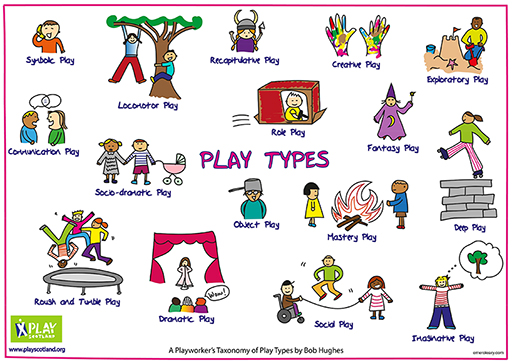2 Types of play
Play involves a wide range of different activities and behaviours. Children’s activity also often involves multiple types of play at once or may flow from one type to another seamlessly. Different types of play involve different types of movement and varying levels of physical activity. Whilst playing, children often repeat actions purely for pleasure, such as swinging, spinning, jumping, pushing/pulling, digging, pouring (water), for example, and in doing so, they both stimulate their proprioceptive system and develop control or mastery of the action.
Play involves many different activities, but essentially it is about having fun! Play can be described as ‘what children do when they follow their own ideas and interests, in their own way, and for their own reasons’ (Play England, 2020). From this perspective, play might be considered an ‘end in itself’, yet simultaneously, play serves a powerful developmental purpose. Therefore, providing children with opportunities to engage in a range of self-chosen play is crucial.
Bob Hughes, a play specialist, studied children’s activity and identified sixteen different types of play, known as the ‘Taxonomy of Play Types’ (Hughes, 2002). These are shown in Figure 2.
A printable download of Figure 2 is available in the Further resources section at the end of this week.

